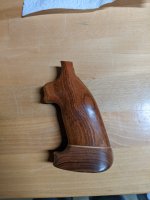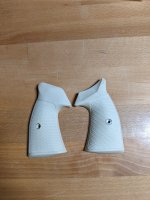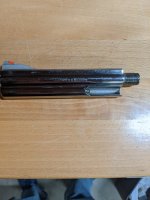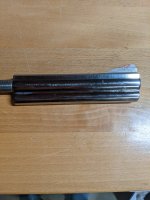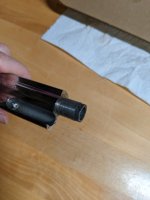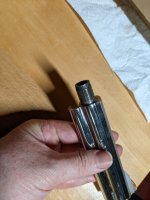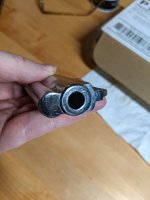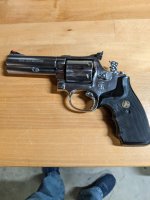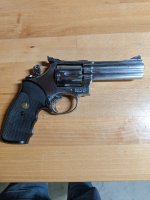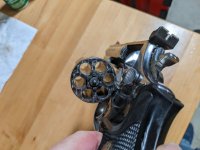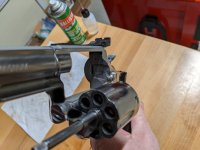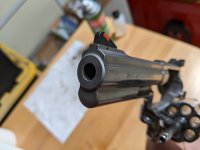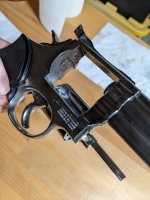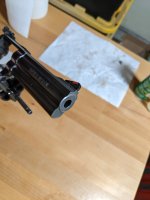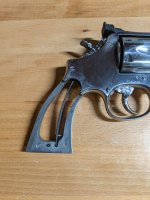In Florida (by distance from me!):
Rick/Gulf Coast Precision/GCP Rifles - North Venice, FL
Eric Bostrom - Myakka City, FL
Dana English Rifles - Wauchula, FL
Alex Wheeler/Wheeler Accuracy - High Springs, FL
Gordy Gritters/Gordy's Precision - Edgewater, FL
Joe Walls/Walls Rifles - Hastings, FL
Altus Shooting Solutions - Baker, FL
Outside Florida (and in random order):
Mike Manzella/Manzella Precision - Roundup, MT (just north of Billings)
Chase Fisher/Fisher T&C - Lewistown, MT
Kirby Allen/Allen Precision Shooting Rifles - Fort Shaw, MT
Snowy Mountain Rifles - Hamilton, MT
Mike R./TacOps - Beverly Hills, CA
Aaron Roberts/Roberts Precision Rifles - Spring, TX
Travis Redell/R Bros Rifles - Bastrop, TX
Clayton Smith/West Texas Ordnance - Brownfield, TX
Alamo Precision Rifles - North Richland Hills, TX
Red Beard Gun Works - Portland, TX
Hill Country Rifles - New Braunfels, TX
Mike Brazda/Bayou Teche Guns - Arnaudville, LA
Brian Allen/A-Team Precision - Rayville, LA
Garret Preece/Preece Precision - Ogden, UT
Blue Mountain Precision - Vernal, UT
Phoenix Custom Rifles - Tempe, AZ
Axis Works - Tempe, AZ
Owens Armory - Chino Valley, AZ
Chad Dixon/Long Rifles, Inc. - Sturgis, SD
Travis Stevens/TS Customs - Miller, SD
Dave Tooley/Tooley Custom Rifles - Gastonia, NC
Swift Creek Rifles - Goldsboro, NC
Tim Roberts/Crescent Customs - Kansas City, MO
George Gardner/Gap Precision - North Kansas City, MO
Hunt's Long Range - Summersville, MO
Jered Joplin/American Precision Arms/APA - Jefferson, GA
Joe Collier/Collier Rifles - Millen, GA
Mark Gordon/Short Action Customs/SAC - Wellington, OH
Kelbly's Rifles - North Lawrence, OH
Jon Beanland/Beanland Custom Rifles - Gould, OK
Stuteville Precision - Shawnee, OK
Mile High Shooting - Frederick, CO
Greg Tannel/Gretan Rifles - Rifle, CO
Fritz/Black Canyon Customs - Denver, CO
Emil Kovan/Kovan Match Rifles - Bailey, CO
Rob Snyder/RW Snyder Custom Guns - Manning, IA
Frank Green/Bartlein Barrels - Jackson, WI
Greg Young/Southern Precision Rifles (BugHoles, Inc) - Cookeville, TN
Dane Miller Rifles - Las Vegas, NV
Marc S./Spartan Precision Rifles - Caldwell, ID
Dallas Lane/Lane Precision Rifles - Pocatello, ID
Kinport Peak Rifles - Pocatello, ID
Patriot Valley Arms - Pottstown, PA
WAR Rifles - Manassas Park, VA
The list was mostly borrowed/based on the great work of PrecisionRifleBlog.com
The intent of the list is to be a resource for those who want precision rifle smithing services like blue printing, accurizing, chambering, barreling, bedding, trigger timing, full custom builds, etc., and not a list of companies that specialize in "Spec'd builds with select options". That isn't a judgement on the latter, indeed their rifles are usually outstanding. Many of the latter builders might NOT want to be listed here because answering inquiries about services they don't offer just wastes valuable time better spent elsewhere.


 www.nwahomepage.com
www.nwahomepage.com

